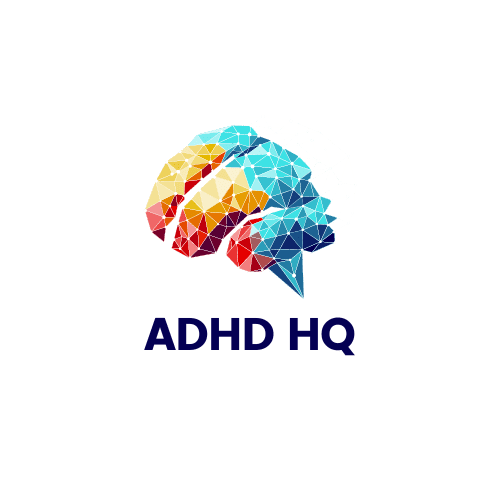Fasoracetam Adhd
Exploring the potential of Fasoracetam for ADHD treatment, I was intrigued by the nuanced approach it takes in targeting specific genetic mutations linked to the GRM network genes.
The study's findings shed light on the efficacy of this mGluR activator, particularly in adolescents with ADHD.
As I investigated the research, the significant improvements in Clinical Global Impressions scores piqued my interest, hinting at a promising avenue for tailored treatment strategies.
Key Takeaways
- Fasoracetam targets ADHD symptoms by modulating glutamatergic neurotransmission.
- Efficacy is prominent in cases with mGluR gene disruptions.
- Dosage adjustments and genetic variations impact fasoracetam's effectiveness.
- Fasoracetam offers a unique alternative for managing ADHD influenced by genetic variations.
Fasoracetam: Understanding Its Mechanism

Fasoracetam intricately interacts with all three groups of metabotropic glutamate receptors, elucidating its role in modulating glutamatergic neurotransmission. This modulation is essential in understanding how fasoracetam affects cognitive function and potentially ADHD symptoms.
By stimulating metabotropic glutamate receptors, fasoracetam influences neural signaling and synaptic plasticity, which are fundamental processes in learning and memory. In the context of ADHD, where neural signaling and synaptic plasticity may be disrupted, fasoracetam's ability to target these pathways holds promise for therapeutic intervention.
Specifically, in cases of ADHD with glutamatergic gene network variants or mGluR mutations, fasoracetam's impact on these receptors could be particularly beneficial.
Understanding the mechanism by which fasoracetam interacts with metabotropic glutamate receptors provides insight into its potential as a targeted drug therapy for adolescents with ADHD. By honing in on the glutamatergic system, fasoracetam may offer a more precise approach to improving cognitive function and alleviating ADHD symptoms in individuals with specific genetic variations affecting this neurotransmitter network.
Benefits of Fasoracetam for ADHD

In exploring the therapeutic potential of NFC-1 for ADHD, the significant improvements in Clinical Global Impressions scores among adolescents with ADHD stand out as a notable indicator of its effectiveness.
When considering the benefits of Fasoracetam for ADHD, several key points emerge:
- Subjects with specific mGluR Tier 1 and Tier 2 gene disruptions experienced superior responses to NFC-1.
- The efficacy of NFC-1 in reducing ADHD symptoms was dose-dependent in individuals with mGluR mutations.
- Over 80% of participants demonstrated clinically significant improvement in ADHD symptoms with dose escalation of NFC-1.
- Actigraphy data supported the observed efficacy of NFC-1 in improving ADHD symptoms, showing reductions in moderate to high-intensity movements and physical activity.
These findings underscore the potential of Fasoracetam, particularly NFC-1, as a promising intervention for individuals with ADHD, especially those with mGluR mutations. The dose-dependent nature of its effects and the improvements seen in Clinical Global Impressions scores highlight its role in addressing ADHD symptoms effectively.
Dosage Recommendations for Fasoracetam

When determining the appropriate dosage of fasoracetam for individuals with ADHD, it's essential to contemplate a range of 100mg to 800mg per day, with initial dosing typically starting at 100mg twice daily and adjusting based on individual response.
Variants disrupting mGluR neurotransmitter gene network can impact the effectiveness of this drug in treating ADHD. Research suggests that individuals with glutamatergic gene mutations may benefit from fasoracetam therapy, particularly adolescents with ADHD.
Dosage recommendations play an important role in optimizing treatment outcomes. Tailoring the dose to the individual's needs and response is important for achieving improvements in ADHD symptoms. Dosage adjustments should be made under medical supervision to monitor efficacy and potential side effects closely.
Understanding the impact of gene network variants disrupting glutamatergic genes on the response to fasoracetam can aid in determining the most effective dose for each individual. By considering these factors, healthcare providers can better guide patients in utilizing fasoracetam as part of their ADHD management strategy.
Potential Side Effects of Fasoracetam

Based on clinical trial data, common side effects of fasoracetam may include headaches, fatigue, and abdominal pain. These treatment-emergent adverse events (TEAEs) were mostly mild in severity, with no significant difference between placebo and active drug administration weeks.
Monitoring and managing side effects are pivotal considerations when utilizing fasoracetam for ADHD treatment.
Common Side Effects
Experiencing mild side effects such as headache, fatigue, and abdominal pain is common among ADHD patients prescribed fasoracetam. These side effects are typically reported as mild in severity during clinical trials. Additionally, there was no significant difference in the frequency of treatment-emergent adverse events between placebo and active drug weeks. Patients may also notice a reduction in moderate to high-intensity movements as indicated by actigraphy monitoring. Fasoracetam's safety profile in ADHD patients showed tolerability with mild side effects reported.
- Headache
- Fatigue
- Abdominal pain
- Reduction in moderate to high-intensity movements
These side effects, although common, are generally manageable and don't typically hinder the overall effectiveness of the treatment.
Rare Adverse Reactions
In the context of ADHD treatment with fasoracetam, rare adverse reactions associated with specific genetic variants may manifest as gastrointestinal disturbances, transient headaches, allergic reactions, dizziness, or mild mood changes.
Individuals with mGluR mutations may be particularly susceptible to experiencing gastrointestinal issues like nausea or diarrhea when taking fasoracetam for ADHD. Transient headaches can also occur as a potential side effect in some patients. Allergic reactions, such as skin rashes or itching, are infrequent but possible in individuals with ADHD using fasoracetam.
Additionally, dizziness or lightheadedness may rarely be observed in this population. Uncommonly, mild mood changes or irritability could be linked to fasoracetam use in ADHD patients with specific genetic variants, highlighting the intricate network between genes, hyperactivity, and medication response.
Research Studies on Fasoracetam and ADHD

Recent research studies on fasoracetam and ADHD have generated mixed results regarding its efficacy in treating the condition.
While some trials have shown positive outcomes, particularly in cases of specific genetic mutations, others have found limited effectiveness.
Understanding fasoracetam's impact on ADHD requires a nuanced analysis of its varied effects on individuals with different genetic profiles.
Efficacy in Treating ADHD
Research studies have demonstrated the efficacy of fasoracetam in treating ADHD cases with specific mGluR gene mutations. Adolescents with ADHD and mGluR disruptions showed significant improvements in ADHD symptoms when treated with fasoracetam. The effectiveness of fasoracetam in ADHD treatment is influenced by genetic factors, with positive responses observed in specific genetic cases. Studies indicate that fasoracetam's impact on ADHD symptoms is particularly notable in cases associated with mGluR mutations.
- Fasoracetam may be effective in treating ADHD cases with specific mGluR gene mutations.
- Adolescents with ADHD and mGluR disruptions showed significant symptom improvements with fasoracetam.
- Fasoracetam's efficacy in ADHD treatment varies based on genetic factors.
- Positive responses to fasoracetam were observed in specific genetic cases of ADHD.
Side Effects Profile
From the observed common treatment-emergent adverse events (TEAEs) in fasoracetam ADHD trials, notable side effects such as headache, fatigue, and abdominal pain were reported. The majority of these TEAEs were mild in severity, indicating a relatively tolerable side effect profile of fasoracetam.
Surprisingly, the frequency of TEAEs didn't notably differ between the placebo and active drug weeks during the clinical trials. Actigraphy analysis also revealed reductions in moderate to high-intensity movements and decreased mean Moderate to Vigorous Physical Activity (MVPA) per hour with fasoracetam treatment.
User Experiences With Fasoracetam

Some users of fasoracetam for ADHD have reported varied experiences, ranging from enhanced focus and motivation to minimal impact on symptoms. Personal accounts reveal a spectrum of responses to this compound, shedding light on its potential effects on cognitive function and productivity. Here are key observations from user experiences:
- Improved focus, attention, and cognitive function have been noted by some individuals.
- Increased alertness and motivation have led to enhanced productivity for certain users.
- Essential to no effects on ADHD symptoms have been reported by others.
- The effectiveness of fasoracetam for ADHD may be influenced by individual variances and genetic factors.
Considering the diverse responses, it's essential for those contemplating fasoracetam usage to engage in a consultation with a healthcare provider. This step can help determine the appropriateness and potential effectiveness of fasoracetam for addressing their specific ADHD needs.
Fasoracetam Vs. Traditional ADHD Medications

Fasoracetam diverges from traditional ADHD medications by targeting the glutamatergic system rather than focusing on dopamine and norepinephrine. While stimulants like Adderall and Ritalin act on dopamine and norepinephrine pathways, fasoracetam offers a unique approach by modulating metabotropic glutamate receptors. This novel mechanism of action makes fasoracetam a potential candidate for cases of ADHD associated with mGluR mutations, forming a genetic tier of ADHD treatment.
Specifically, individuals with disruptions in the mGluR gene network may benefit from fasoracetam due to its ability to influence the glutamatergic system. By honing in on this pathway, fasoracetam may provide advantages over traditional medications in addressing the underlying neurobiological factors of ADHD linked to glutamatergic dysfunction. This specialized focus on metabotropic glutamate receptors showcases a promising alternative for managing ADHD cases influenced by genetic variations, offering a targeted and innovative therapeutic strategy in the domain of ADHD treatment.
Frequently Asked Questions
Can Nootropics Help Adhd?
Nootropics, when carefully chosen and used appropriately, can have a positive impact on cognitive enhancement, brain function, memory improvement, focus and attention, neurotransmitter balance, executive function, mental clarity, mood regulation, stress management, and learning abilities.
What Are the Best Adaptogens for Adhd?
As someone exploring natural remedies, I've found adaptogens like Rhodiola rosea, Panax ginseng, and Ashwagandha to be beneficial for managing ADHD symptoms. These herbal supplements improve focus, attention, and cognitive function effectively.
What Is the Best Lifestyle for People With Adhd?
Incorporating mindful meditation, an exercise routine, healthy diet, sleep schedule, stress management, time management, social support, cognitive therapy, organization skills, and relaxation techniques can optimize daily functioning and well-being for individuals with ADHD.
Can Reflexology Help With Adhd?
As a research enthusiast, I've explored into the domain of reflexology benefits for ADHD. While promising for relaxation and stress management, reflexology's direct impact on ADHD symptoms remains inconclusive, warranting further investigation.
Conclusion
To summarize, fasoracetam shows promise as a potential treatment for ADHD, especially in individuals with specific genetic mutations.
Like a key fitting perfectly into a lock, fasoracetam's mechanism of action targeting the mGluR network genes may offer a tailored approach for those with unique genetic variants.
Further research and clinical trials are needed to fully understand the efficacy and safety of this compound in managing ADHD symptoms.






